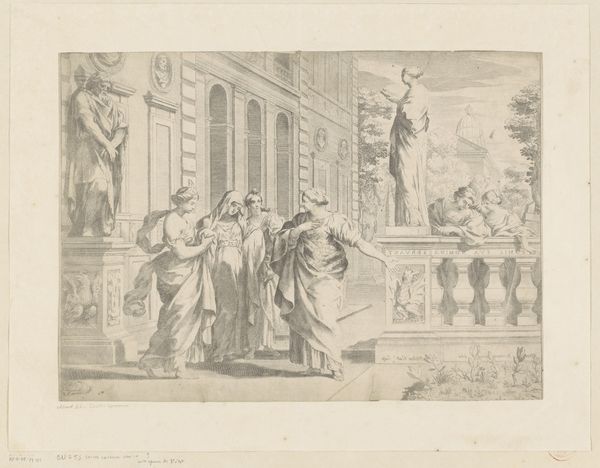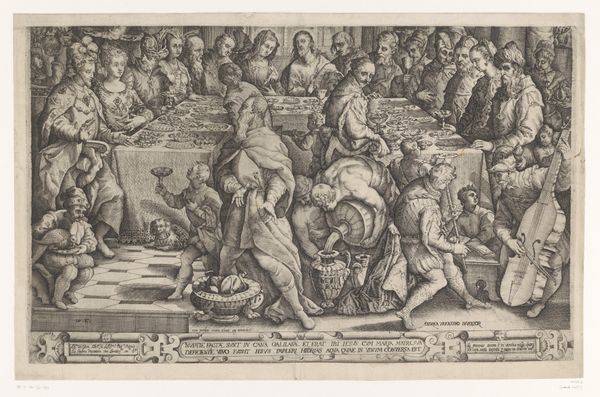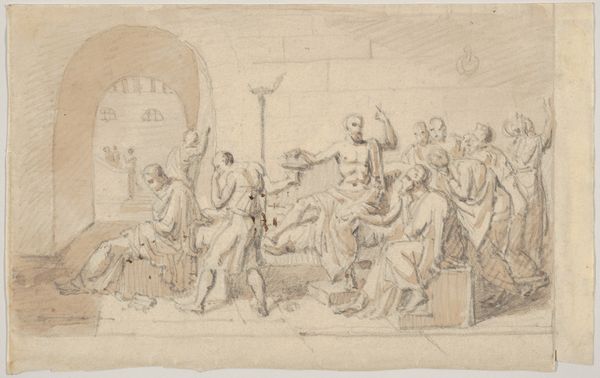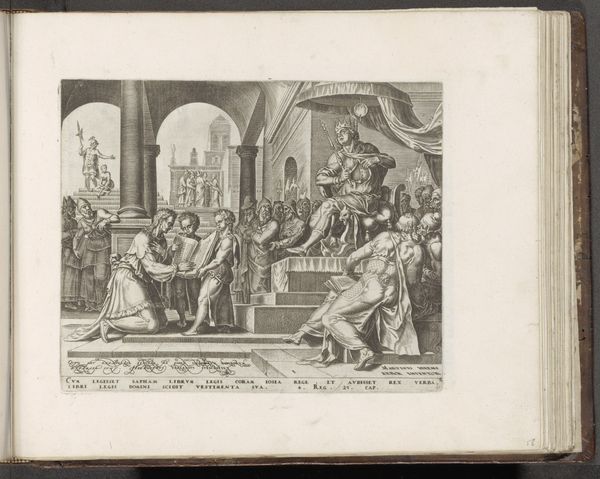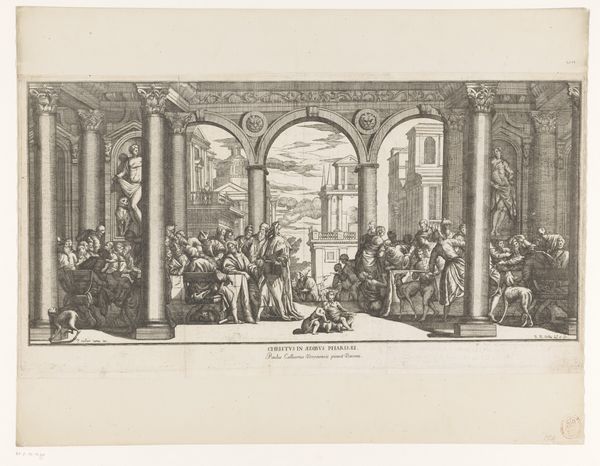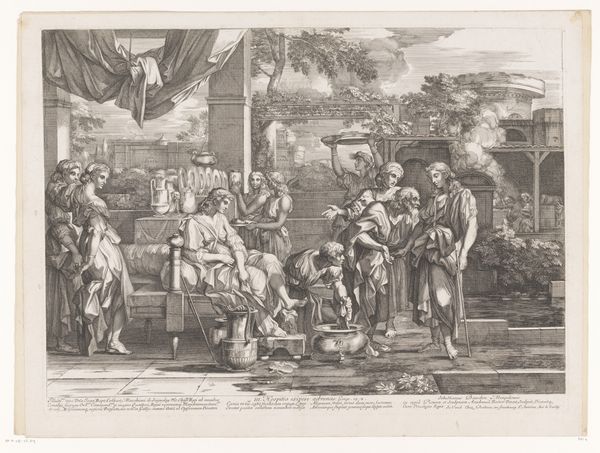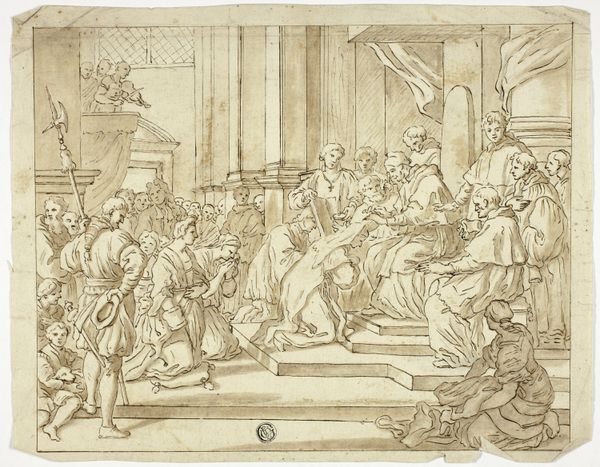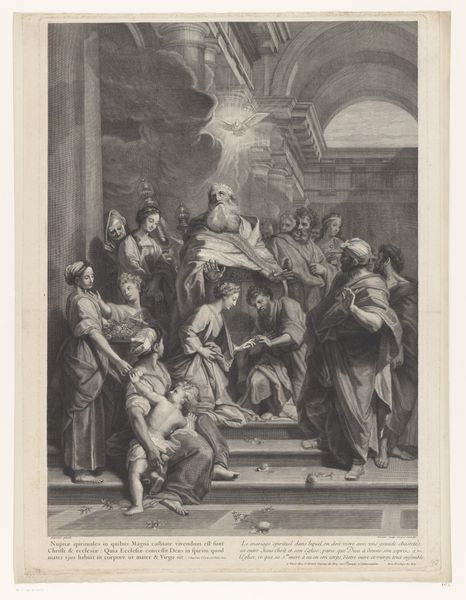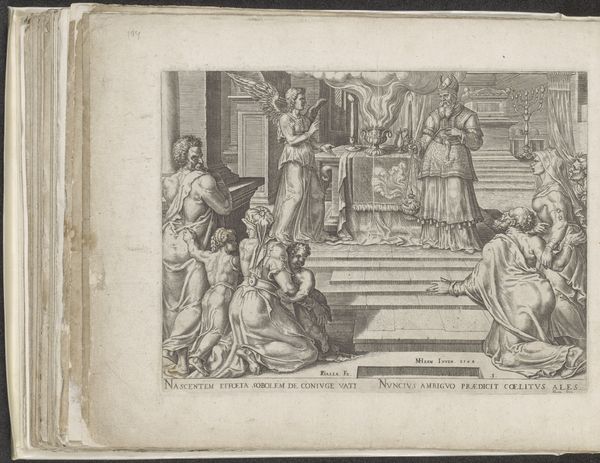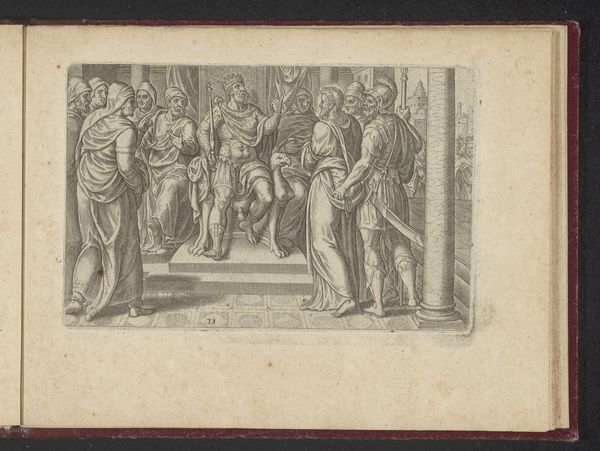
print, engraving
#
baroque
# print
#
landscape
#
figuration
#
history-painting
#
engraving
Dimensions: height 367 mm, width 528 mm
Copyright: Rijks Museum: Open Domain
Curator: This is “Apollo op de Parnassus,” an engraving created by Sébastien Vouillemont after 1620. It plunges us into a scene brimming with figures. Editor: My immediate reaction is one of ordered chaos, a kind of symmetrical anarchy. There’s a clear structure – a semi-circular composition, and figures carefully placed – yet the sheer number of them creates a lively, almost restless feeling. Curator: The choice of engraving as a medium contributes significantly to this impression. Vouillemont’s lines, precise and deliberate, give form to the composition and to the figures, defining their placement in the represented space. This interplay between clarity and multiplicity enhances the symbolic charge. Editor: Absolutely. The scene pulsates with references to classical antiquity. Apollo, god of music, arts, knowledge, and light, seems to be holding court, surrounded by muses, poets, and perhaps philosophers—all convened on Mount Parnassus. We're witnessing a symbolic representation of the wellspring of creative and intellectual endeavor. Curator: Observe how the formal arrangement, however intricate, never dissolves into incoherence. The architectural element near the base anchors the whole composition, and it invites our analytical examination and the interpretation of symbolic significance within a theoretical framework. The trees behind, carefully drawn with an acute attention to pattern. Editor: And that architecture at the bottom anchors the divine presence on the mountain, doesn't it? This almost reminds us that, for all the high-minded philosophical and artistic fervor, there's a connection between these elevated ideas and the grounding of human experience. It asks, "What are the foundations of artistic creation?" Curator: Precisely, and this also contributes to a layered symbolic landscape which invites closer consideration within the historical-cultural context. The visual tension achieved between these details gives a greater understanding of this period, allowing the composition to resonate and provoke thoughtful reflection. Editor: I agree entirely. Thinking about Apollo’s patronage of the arts within the framework of human creation reminds us of how culturally entrenched the classical world was and how its imagery offered pathways to making sense of contemporary society through metaphor. This visual symbolism helps translate and make it a continuous exploration of humanity. Curator: Exactly, and the study of “Apollo op de Parnassus,” in particular through the use of engraving, gives significant importance in the formal tradition of disseminating symbolic cultural motifs. Editor: Indeed, delving into such work brings an expanded view of the exchange between history and symbolism, in visual artwork.
Comments
No comments
Be the first to comment and join the conversation on the ultimate creative platform.


